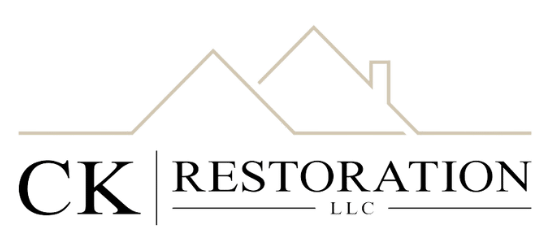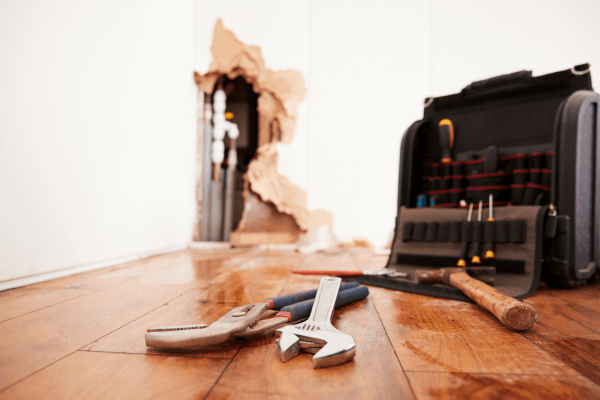Floods can wreak havoc on homes and properties, leaving a trail of destruction that demands immediate attention. Whether you’re a homeowner or a property manager, proper flood damage cleanup is necessary to get back to normal. In this post, we’ll explore the ten most common flood cleanup mistakes and how to avoid them, helping you protect your property and restore it efficiently.
1) Not Acting Quickly: The Importance of Immediate Response to Flood Damage
Time is your biggest enemy when it comes to flood damage. Waiting even a few hours can cause water to seep deeper into walls, floors, and structural elements, which leads to costly repairs and health hazards. FEMA says mold begins growing in as little as 24-48 hours, so acting quickly can save you thousands of dollars in remediation costs. Start by removing standing water, airing out affected areas, and using fans and dehumidifiers to dry everything out. Quick action prevents mold, mildew, and further structural damage.
2) Underestimating Safety Risks: Common Hazards During Cleanup

Floodwaters are not just dirty—they are often contaminated with harmful chemicals, bacteria, and sewage. Before stepping into a flooded area, ensure the electricity is turned off to avoid electrocution. Always wear protective gear like gloves, waterproof boots, and masks to reduce exposure to toxins. Floodwater can also hide sharp debris, so be cautious while moving through affected areas. By prioritizing safety, you protect yourself and others from unnecessary harm during the cleanup.
3) Ignoring Professional Help: Reasons to Always Consult with Restoration Experts
While DIY cleanup may seem cost-effective, some flood damage requires professional expertise. Restoration experts have specialized equipment such as industrial-grade dehumidifiers, air scrubbers, and moisture detectors that allow for thorough drying and mold prevention. They can also identify hidden damage in walls, flooring, or insulation that might go unnoticed. Investing in professional help upfront can save you from more expensive repairs and health problems later on.
4) Failing to Document Damage: Tips for Properly Documenting to Aid Insurance Claims
Accurate documentation is essential when filing an insurance claim after a flood. Take high-resolution photos and videos of all water-damaged areas before moving or cleaning anything. Keep a list of damaged items, their condition, and any associated repair costs. This thorough record helps ensure that your insurance provider can accurately assess the damage and provide appropriate coverage. Be proactive in keeping receipts and records of any cleanup or repairs to avoid disputes later on.
5) Overlooking Hidden Water: Areas Often Missed in Initial Cleanup
Water tends to travel into hard-to-reach areas, such as behind walls, under floors, and inside ducts. These hidden moisture pockets can go unnoticed during initial cleanup and create the perfect breeding ground for mold and mildew. Using moisture detectors, infrared cameras, or hiring professionals with specialized equipment can help identify and address these hidden areas. Regularly checking basements, crawl spaces, and behind appliances is critical to preventing long-term damage.
6) Neglecting to Address Moisture: The Long-Term Impact of Inadequate Drying
Visible water removal is just the first step; lingering moisture can cause long-term damage if not properly addressed. Warped wood, swollen drywall, and moldy odors are common issues resulting from insufficient drying. Use dehumidifiers and fans to speed up the drying process and circulate air in the affected area. In some cases, walls or floors may need to be removed to dry the structure completely. Don’t cut corners when it comes to thorough drying—doing so may lead to major repairs later.
7) Improperly Disposing of Damaged Items: Guidelines for Safe and Legal Disposal
After a flood, many items will be unsalvageable, but improper disposal of these items can pose environmental hazards or health risks. Check local disposal regulations before discarding flood-damaged items, as certain materials may require special handling, such as electronics, appliances, or hazardous chemicals. Properly disposing of contaminated materials like carpets, drywall, and mattresses will help reduce the spread of mold and bacteria, keeping your property and community safer.
8) Skipping Preventative Measures: Steps to Reduce Future Flood Risks
Once cleanup is complete, it’s time to focus on preventing future flood damage. Install sump pumps, backflow valves, and waterproof barriers to protect your home from flooding again. Seal cracks in the foundation and basement walls and elevate appliances and utilities if you live in a flood-prone area. Regularly maintain your drainage systems, gutters, and downspouts to ensure water flows away from your property. These proactive steps will minimize the impact of any future flooding.
9) Not Communicating with Insurance: The Importance of Open Dialogue with Your Insurance Provider
Maintaining clear communication with your insurance company is critical during flood damage cleanup. Report the flood damage as soon as possible, and keep them updated on your progress. Ask your insurance provider for specific documentation requirements and stay in touch regarding claim status. Knowing your coverage limits and deductibles in advance will help manage expectations and prevent delays in receiving the compensation you need.
10) Rushing the Process: The Benefits of Patience and a Thorough Approach
It’s understandable to want to get your home back to normal as quickly as possible after a flood, but rushing the cleanup process can result in more damage down the line. Ensure that all areas are thoroughly dried before beginning repairs. A slow and steady approach will allow you to catch hidden problems, prevent future issues, and avoid costly mistakes. Take the time to do it right the first time to save time, money, and frustration later.
Avoid Mistakes and Ensure a Successful Flood Damage Cleanup
Flood damage cleanup is a daunting task, but avoiding these common mistakes can make the process smoother and more effective. By acting quickly, prioritizing safety, and seeking professional help, you can protect your property and minimize long-term damage. Don’t forget to document everything for insurance purposes and take preventative steps to safeguard your home in the future.If you’re still unsure or overwhelmed, we’re here to help. At CK Restoration, we don’t just restore homes—we restore peace of mind. Contact us today to learn more about our comprehensive water damage restoration services and how we can assist you in reclaiming your living space. Visit our website to book a consultation or call us now. Let’s redefine restoration together!

